Use my ‘how to talk about art with kids’ printable question cards as part of this easy art criticism lesson for children.
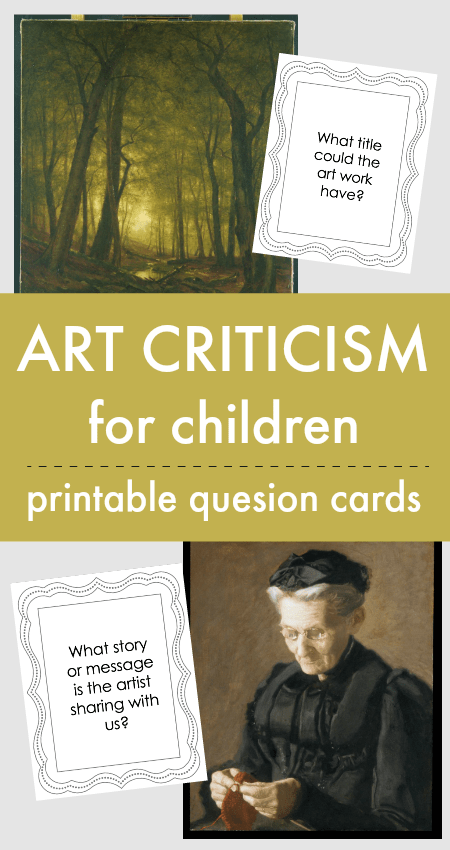
Save time with our ready-made art lesson plans
The best and easiest way to teach great art lessons is to use our ready-made art curriculum, Exploring Great Artists.
This ready-made art curriculum gives you everything you need to teach an exciting art program inspired by the great artists of the world including:
- a complete program of art lessons featuring famous artists from around the world including Miro, Picasso, O’Keefe, Van Gogh, Matisse, Pollock, Monet, Warhol, Mondrian, Kandinsky and many more
- an art history profile of each artist
- creative, hands-on art projects for your children to try, for every featured artist
- materials lists and step-by-step lesson plans that make it so easy to teach
- full colour photographs of real student art work for each project
- everything planned for you, so you can enjoy it as much as your children do
See more and get your copy of Exploring Great Artisits here and you’ll be all set to teach this great curriculum.
Easy art criticism lesson for children with printables
Let’s talk about art! Art criticism helps us look closely at art, think about why the artist has chosen to make a particular art work, and consider what the piece means to us personally.
Children can be great art critics, and talking about art helps develop their thinking skills, language, and understanding of the world.
In this resource you can:
:: learn how to talk about art with children
:: learn how to conduct an art criticism lesson
:: find links to ten paintings suitable for art criticism lessons for children
:: download a set of free art criticism question cards – see below
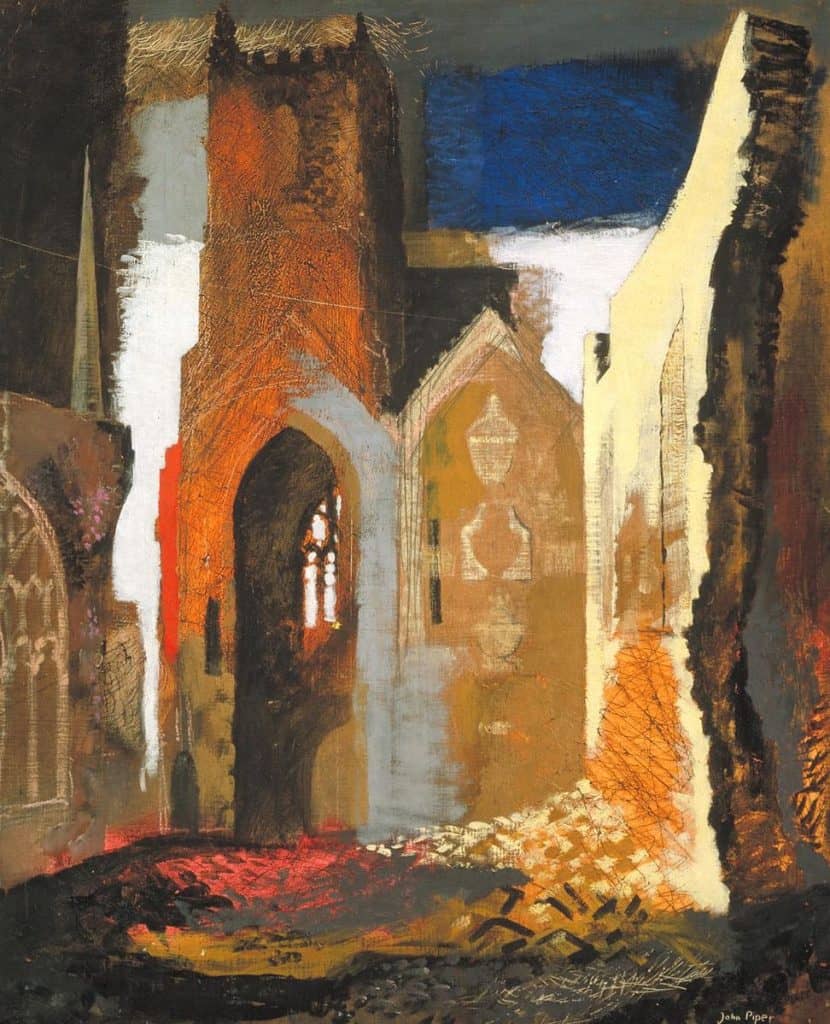
What is art criticism?
Art criticism means thinking and talking about a work of art.
Everyone can have an opinion on a work of art, whatever our age or experience with art.
Children can be fantastic art critics. They can express fresh opinions, use their imagination, and generate interesting ideas.

The four stages of art criticism
We usually work through four stages when we critique a work of art:
:: description
:: analysis
:: interpretation
:: decision
Let’s see what questions we can use to talk about each stage and getting chatting!
How to describe a work of art
To describe a work of art we might talk about:
:: what we can see in the artwork
:: the materials the artist has used
:: the colours the artist has used
:: what patterns, lines, shapes, and textures we can see
How to analyse a work of art
To analyse a work of art we can think about how it is put together as a complete creation. We can talk about:
:: the composition of the art work
:: what’s in the foreground, middle ground, and background
:: whether it is symmetrical or asymmetrical
:: what sizes and placement of items can we see
:: how different parts of the art work relate to each other
How to interpret a work of art
To interpret a work of art, think about how the piece makes you feel and what it makes you think about. We might talk about:
:: if the art works reminds us of anything in our own life
:: what title you would give the art work
:: if the art work relates to any other area you have learnt about: a book you’ve read, a film you’ve seen, an event that’s happened
How to decide on a work of art
Finally, we can make our own judgement on the work of art and decide if we like it or not. We can talk about:
:: which aspects of the artwork we think are a success and which are not
:: how the artwork compares to other works
:: if we think the art work shows us something original
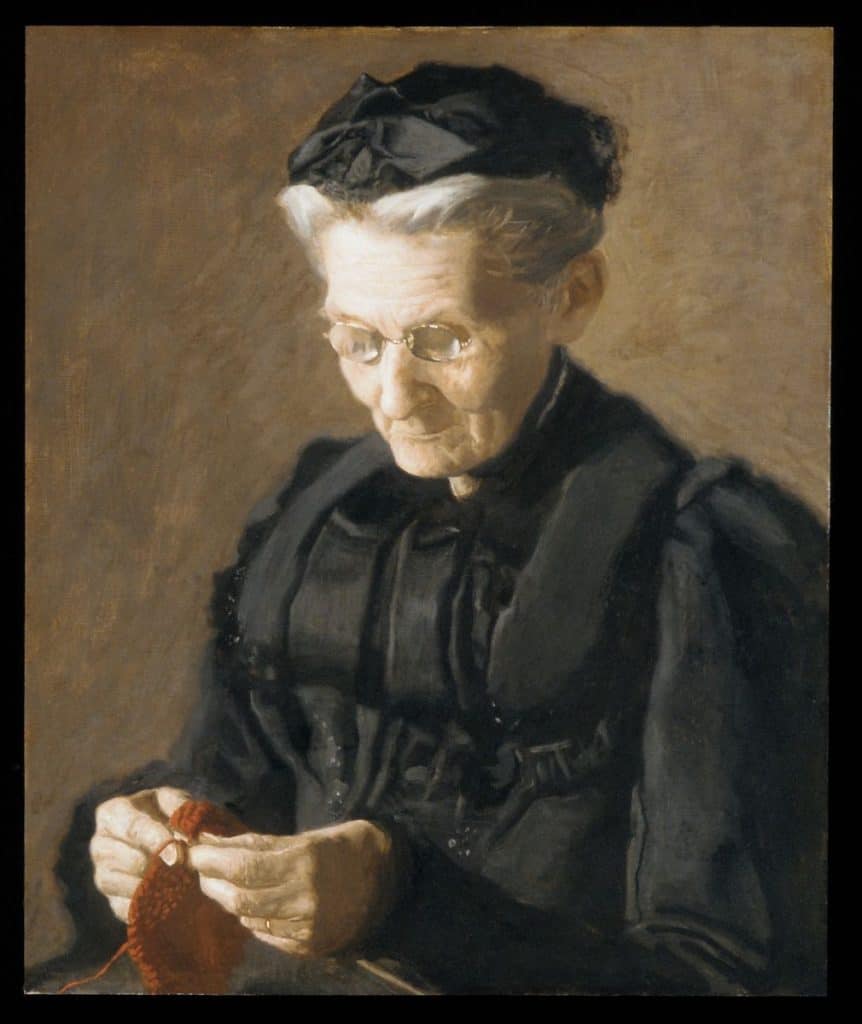
Thomas Eakins American
An easy art criticism lesson plan for elementary children
Children can work alone, in pairs, or as a group.
Your art criticism can be a written assignment or a discussion. I always recommend talking about art before trying to write about it.
It’s valuable to hear other people’s ideas, but remember you can have hold your own unique view.
An easy way to talk about art with children can be planned in three stages:
:: show your children a work of art. You can use one of these ten paintings suitable for art criticism lessons for children, choose one of your own favourite paintings, visit a gallery to look at the art, or invite your children to bring a picture of an interesting artwork. And take a look at these famous paintings that show color theory.
:: open up the conversation with the simple question: what can you see? Be open to all ideas the children share. Encourage everyone to give their impression. Use my visual thinking strategies lesson plan to get more ideas on how to host a conversation about art with children.
:: use my printable art criticism cards to develop the conversation. The cards prompt you to talk in more detail about what you see and how you interpret the art works. To print the cards – see below.
Ten paintings to use for art criticism lessons for children
Click here to see ten paintings that are good to use for an art criticism lesson.
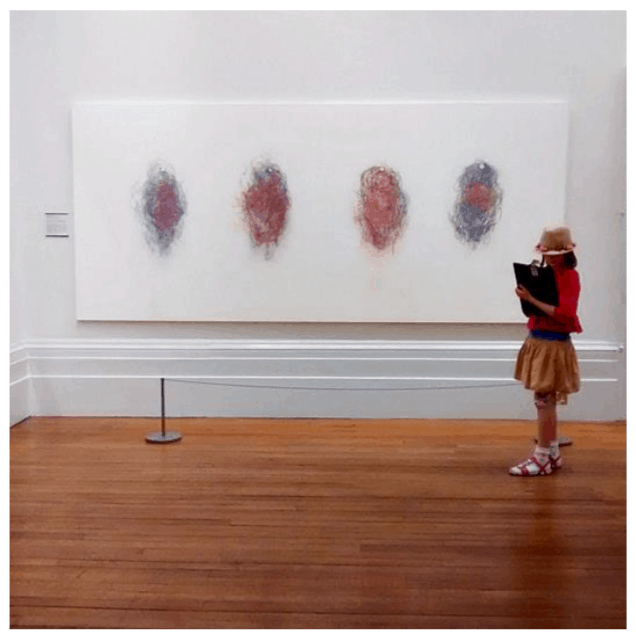
More ways to use the art criticism discussion prompts printable
Print the art criticism question cards (see below), cut them out, and laminate them for extra durability if you wish.
You can:
:: punch a hole in the corner of each card and thread them onto a ring, making them easy to carry and use
:: use them as flashcard prompts for a class discussion
:: use them as a prompt for more ideas when children need guidance in their own criticisms
:: take them to the museum or gallery with you, and use them to get more from your visit
Save time with our ready-made art lesson plans
The best and easiest way to teach great art lessons is to use our ready-made art curriculum, Exploring Great Artists.
This ready-made art curriculum gives you everything you need to teach an exciting art program inspired by the great artists of the world including:
- a complete program of art lessons featuring famous artists from around the world including Miro, Picasso, O’Keefe, Van Gogh, Matisse, Pollock, Monet, Warhol, Mondrian, Kandinsky and many more
- an art history profile of each artist
- creative, hands-on art projects for your children to try, for every featured artist
- materials lists and step-by-step lesson plans that make it so easy to teach
- full colour photographs of real student art work for each project
- everything planned for you, so you can enjoy it as much as your children do
See more and get your copy of Exploring Great Artisits here and you’ll be all set to teach this great curriculum.
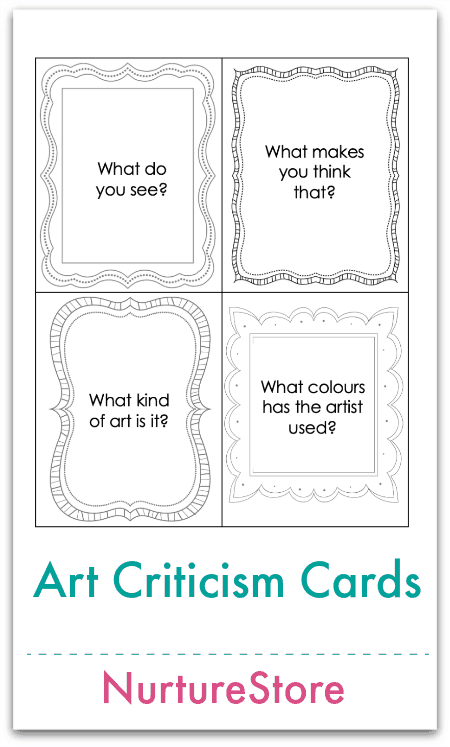
How to get our free printables
To download my free printables, you'll need to visit the NurtureStore Printables Library, which is available to all subscribers to my email list, and of course to Play Academy members.
Pop your email address in the form below and you’ll get access to all my free printables, lesson plans, activity ideas, weekly newsletter, and a whole lot more!
After subscribing, be sure to check for the confirmation email. After you confirm your email subscription, we'll send you a welcome email which includes instructions for downloading our free printables.
If you're already subscribed to our email newsletter: check your email for the latest edition of the newsletter where you’ll find a link to access our free printables library - the link is usually at the bottom of the email.
For help accessing our printables, click here.
By subscribing, you consent to our use of your personal data as per our Privacy Policy, which includes agreeing to receiving interest-based email from us.


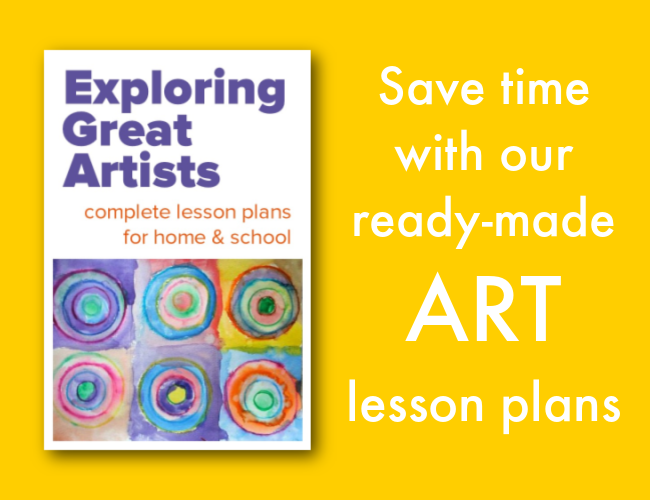
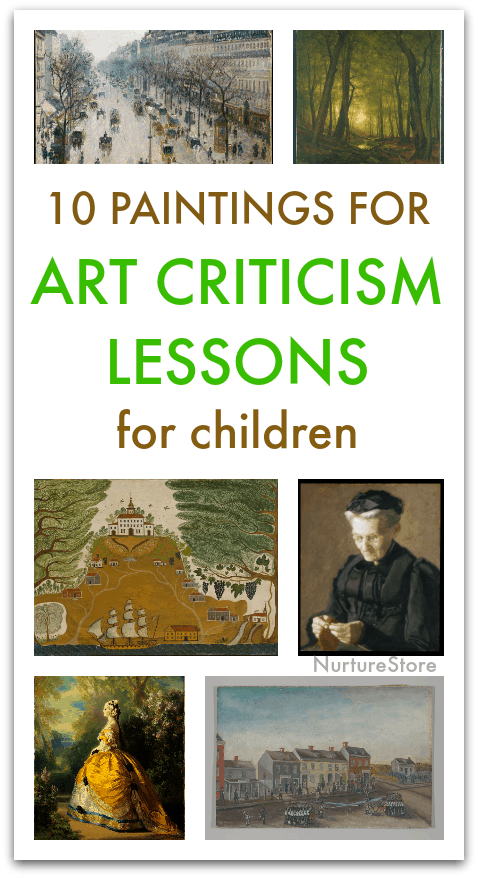
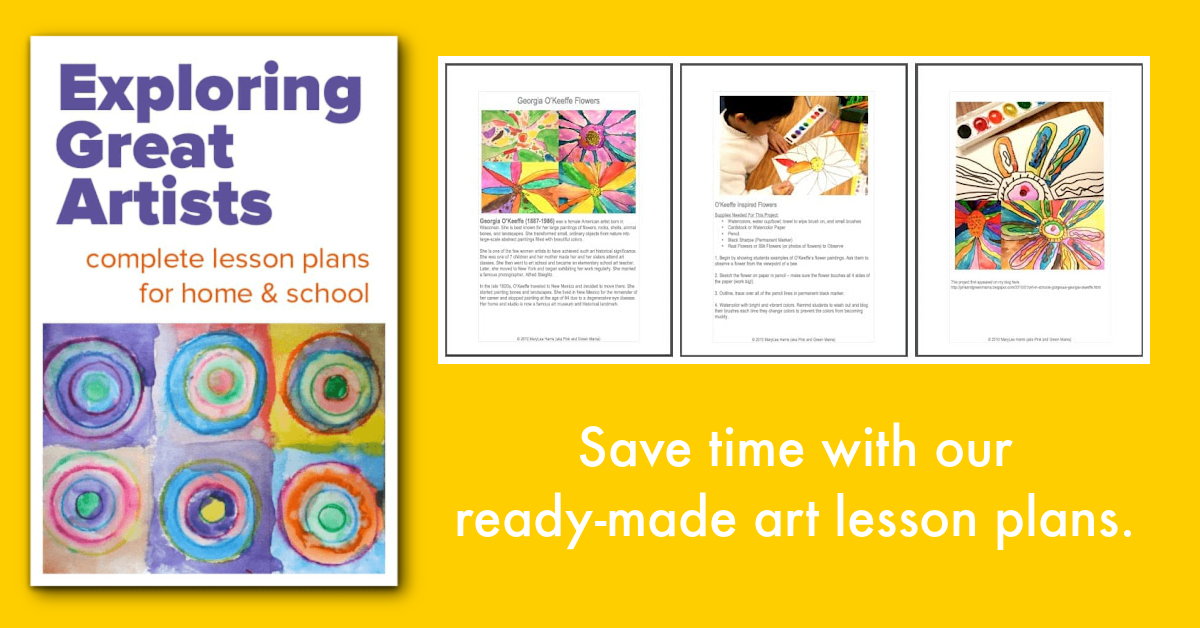
Hi, thanks you
Very interesting 🙂 Thanks